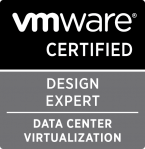After the acquisition of AppAssure, Dell today announced it has signed a definitive agreement to acquire SonicWALL, Inc., a leader in advanced network security and data protection.
Now with the Force10 brand and the new (possible) Security brand, how will evolve the partship with Juniper (for the PowerConnect-J series)? Will finish as the one with EMC2?
See also the official announce: Dell Announces Intent to Acquire SonicWALL













